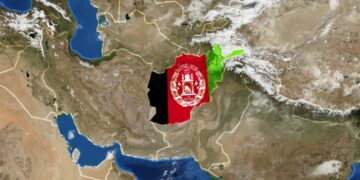Adenegan, K. E.;1 Olademo, J. O.;2 & Lawal, M. O.3
1Adeyemi Federal University of Education, Ondo State, Nigeria
*Corresponding Author Email: adeneganke@aceondo.edu.ng …
Highlights
Abstract
1. Introduction
Autograph is a dynamic mathematics software designed to assist both educators and students in visualizing mathematics concepts at the high school level through the use of progressively interconnected objects. Given the prerequisite for some basic computer skills, it is primarily suitable for students in upper basic grade 6 who are likely to have the requisite exposure to utilize the software effectively. Developed by Douglas Butler of Oundle School, Peterborough, United Kingdom, Autograph is marketed by Chartwell Yorke Limited. It is a versatile personal computer program that operates in three modes: 1-Dimensional (Statistics and Probability), 2-Dimensional (Coordinates in Graphs, Bivariate Data, and Transformations), and 3-Dimensional (Graphing, Coordinates, and Transformations). Similarly, Cabri 3D is developed to address the needs of teaching topics such as geometry in secondary mathematics education.
The adoption of technology-driven software like Autograph and Cabri 3D is crucial for enhancing learning experiences. Likewise, it is essential for teachers to familiarize themselves with contemporary technologies and software applications that facilitate the teaching of mathematics across different educational levels.
An existence devoid of mathematical knowledge would be significantly challenging, given the pivotal role of mathematics in fostering scientific and technological advancement. No nation has achieved technological growth without prioritizing mathematics, which is often described as the language of science and technology. For instance, the computer, hailed as the greatest discovery of this century, traces its origins to mathematical theories. Every problem solved today using computer technology has, at its core, been addressed through mathematics.
This chapter delves into Autograph and Cabri 3D, exploring how they can be optimally utilized in classroom settings. The use of appropriate and relevant software not only makes teaching and learning more engaging but can also simplify complex concepts that might be challenging to explain through traditional instructional materials. By introducing mathematics teachers and students to Autograph and Cabri 3D, this chapter highlights the resourcefulness of these software applications in the mathematics teaching-learning process. It defines Autograph and Cabri 3D and demonstrates how Autograph can be effectively used in classrooms to teach mathematics, thereby enriching the educational experience and facilitating a deeper understanding of mathematical concepts.
2. Autograph and Cabri 3D
According to the technical specification page on the Autograph website, Autograph is compatible with Windows operating systems, including newer versions like Windows 10 and Windows 11, as well as the Macintosh operating system 10.6. Douglas Butler from Oundle School in Peterborough, UK, often referred to as the home of Autograph, is the original creator behind this innovative software, with Mark now serving as the senior developer. He leads the international development team, continually enhancing Autograph’s features and capabilities.
Autograph 3 is at the forefront of using dependent, selectable mathematical objects to help students understand the foundational principles of probability and statistics, as well as coordinate geometry in both 2D and 3D. It offers two levels of operation: ‘Standard’ and ‘Advanced.’ The ‘Standard’ level features a significantly simplified interface and a reduced set of options, catering to users with less experience.
On the other hand, Cabri 3D’s technology originated from the research laboratories of France’s National Center for Scientific Research (CNRS) and Joseph Fourier University in Grenoble. The project began in 1985 when Jean-Marie Laborde aimed to make two-dimensional geometry more accessible and enjoyable for teaching in classrooms and beyond.
Cabri 3D v2 allows users to quickly learn how to construct, view, and manipulate a variety of three-dimensional objects such as lines, planes, cones, spheres, and polyhedra. It enables the creation of dynamic constructions ranging from simple to complex. Users can measure objects, incorporate numeric data, and even review the steps taken to construct their creations (Cabrilog, 2004). Cabri 3D v2 is described as an unparalleled tool for exploring and solving geometry and mathematics problems.
Douglas (2005) notes that Autograph follows the standard conventions of Windows applications in terms of multiple windows (referred to as ‘pages’ in Autograph), loading and saving pages as files, and copying and pasting text, data, and graphics. The significance of Autograph cannot be understated within the broader context of Information and Communication Technology (ICT). In today’s educational landscape, when applied effectively, ICT significantly reduces the traditional burdens faced by classroom teachers.
ICT represents a fusion of advancements in digital telecommunication, merging digital and communication engineering at the device level. It encompasses three critical concepts: information, communication, and technology. Information refers to the specific knowledge obtained or facts collected about a particular topic. Technology, meanwhile, pertains to applied sciences such as engineering (including civil, electrical, electronic, and mechanical engineering), architecture, building technology, food technology, and more.
2.1 How to Use Autograph and Cabri3d in the Teaching and Learning of Secondary Mathematics
In the subsequent discussion, we will examine in practical terms how Autograph and Cabri 3D software can be utilized for teaching Mathematics in secondary schools. At this educational level, students are capable of transitioning from concrete to abstract learning and can effectively use computers and technological media for learning and study.
2.2 The Use of Autograph
Both software applications need to be installed and launched on computers or Mac devices in a teacher-led or student-centered Mathematics laboratory. The Autograph icon, which resembles a plotted graph with a red concave-convex overlay, is shown in Figure 1. Beginners are advised to select the standard form option, while advanced users may opt for the advanced option upon launching, as displayed on the desktop.
Upon opening, a window environment presents a scaled graph along the y and x axes (including both positive and negative values) as illustrated in Figure 2. Meanwhile, Figures 3 and 4 display a comprehensive view of the typical Autograph menu bar and button icons.

(Fig.1: Launching Autograph on PC/MAC) Fig.2: A typical autograph window environment)

(Fig.3: A typical autograph menu bar) (Fig.4: Autograph Button Icons)
For teaching any relevant topic and displaying graphs as output, there’s the equation pane, illustrated in Figure 5, which shows a trigonometric equation. In this instance, trigonometry is the focus, utilizing Autograph for demonstration. It’s essential to name each equation entered in the equation window to prevent confusion and to facilitate the graph’s display when the cursor is placed over it in the output. For instance, Figure 6 showcases the output of sine and cosine graphs plotted against the x variable. Below the window pane, the named equations are clearly displayed.
Autograph can be employed to teach a wide range of topics, including number lines, vectors, trigonometry, geometry, mensuration, and statistics. It features a user-friendly interface that both teachers and students can navigate and utilize effectively. Regular practice, whether in a Mathematics laboratory or at home (provided the students have access to personal computers), can enhance ease of learning and accuracy of use. Depending on the subject matter, the software offers resources for teaching a comprehensive array of topics.

Fig.5: Autograph Equation window) (Fig. 6: Autograph- sine and cosine graph)
For instance, when plotting vectors in vectorial analysis using Autograph, you need to define your vectors in the equation window. The software allows for the selection of any color or the use of a default color suggested by the system. Figure 7 demonstrates vectors a, b, and c, with their directions and magnitudes indicated, which collectively form a triangle on the x-y coordinates.

(Fig.7: Plotting vectors in Autograph window) (Fig. 8: Autograph work output- inserting images)
A remarkable feature of Autograph is its flexibility, including the capability to insert images to illustrate specific concepts. Figure 8 exemplifies this by depicting a line of symmetry, showcasing the software’s built-in functionality for image insertion. These images can also be edited to align with the teaching and learning objectives. Similarly, the representation of plane geometry in Figure 9 is not an inserted image but one drawn within the software, using dimensions inputted in the equation window. The software then automatically generates the desired image, allowing teachers and students to select colours for the outputs.
This adaptability in visual aids, such as the integration of images and the customization of vector representations, greatly enhances the teaching and learning experience. Autograph’s user-friendly interface and versatile features enable educators to effectively convey complex mathematical concepts, while providing students with an engaging and interactive learning environment.
2.3 Classroom Tools Unique to Autograph
Below is a compilation of unique classroom tools within Autograph that both teachers and students will find invaluable:
- On-Screen Mathematical Keyboard: This feature is not limited to Autograph; it functions as a virtual keyboard that can be used across various computer applications. It simplifies the input of mathematical symbols and equations, making the process more intuitive and accessible for users unfamiliar with typing complex mathematical notations.
- Whiteboards and Tablets: Autograph has been thoughtfully designed to integrate seamlessly with whiteboards and tablets. Sketches or work created within the Autograph environment on a tablet can be easily displayed on whiteboards or projectors, whether the connection is wireless or via cables. This feature enhances the interactivity of lessons, allowing for dynamic presentations and real-time engagement with mathematical concepts.
- Slow Plot Mode: This tool allows educators to plot graphs at a controlled pace, making the presentation of complex graphs both interesting and understandable. The slow plot mode is particularly useful in maintaining students’ attention and ensuring that they follow along with the graphing process, facilitating a deeper comprehension of the mathematical principles being demonstrated.
- Rub Out Tool: Functioning similarly to an eraser, this tool enables users to easily remove unwanted parts of a graph or drawing. It aids in keeping the workspace organized and focused on the relevant mathematical representations, allowing for adjustments and corrections to be made effortlessly during the teaching and learning process.

(Fig. 9: Autograph output – Geometry)
2.4 The Use of Cabri 3D
As previously discussed, software like Cabri 3D is predominantly utilized for the teaching and learning of various geometry topics, such as plane geometry, circle geometry, and geogebra. Launching Cabri 3D on a PC system, desktop, or MAC is straightforward, similar to the process for Autograph. Simply clicking on the icon from the home page or desktop initiates the installation or opens the application, depending on the user’s needs. Launching Cabri 3D brings up the initial screen as depicted in Fig. 10, with the window environment presented in Fig. 11.

(Fig. 10: Launching Cabri 3D on PC) (Fig. 11: Cabri 3D Window Environment)
Within the window environment, users can decide exactly what they wish to do by navigating through the menu options available on the menu bar. The interface is designed to be user-friendly, making it accessible for both teachers and students. All operations start from the arrow point located at
the center of the plane. For instance, to draw a cone, one simply selects the option for the geometrical object that appears, and then drags the mouse from a chosen point to the desired length. The software is programmed to automatically calculate volumes, as illustrated in Fig. 12.
Moreover, Figure 13 displays a complex assembly of geometrical shapes on a single plane, including a trapezium, parallelogram, cuboid, prism, and rectangle. Navigating through these tasks is made remarkably easy with the software, enhancing the learning experience. The software vividly brings to life the formulas for calculating areas and volumes of geometrical objects and shapes. For example, it can demonstrate how the area of a circle (πr^2) and its diameter (2r) are derived, providing a practical and engaging way to understand these mathematical concepts.

(Fig. 12: Construction of a cone) (Fig. 13: Construction of various geometrical shapes)
3. The Challenge
From the discussions presented, it is crucial for Mathematics teachers in Nigerian schools to rise to the occasion and align with global educational trends in the classroom environment. Teachers are encouraged to move beyond traditional teaching methods and seek advanced knowledge to make a significant impact on their students.
Furthermore, the secondary Mathematics curriculum should be flexible enough to incorporate information technology and address related subjects. Muhammad, Wun, and Nordin (2020) emphasized that the success of any educational objective largely hinges on the degree to which the curriculum and its contents are effectively implemented. During a TETFund Sponsored Research Project workshop on the Applications and Usage of Autograph and Cabri 3D in Mathematics at Adeyemi College of Education, Ondo, Adenegan (2014) urged Mathematics teachers to familiarize themselves with the curriculum and relevant computer technologies and software applications to enhance their teaching effectiveness. Karnasih and Sinaga (2015) found that students generally enjoy learning through cooperative methods using Autograph. Similarly, Tarmizi, Suraya, Yunus, and Fauzi (2009) highlighted several studies demonstrating the significantly positive impact of integrating technological tools into the Mathematics teaching-learning process. Moreover, Nurjanah, Burhanuddin, Ricki, and Maximus (2020) observed that students in experimental classes who were taught using computer-aided learning with Cabri 3D performed markedly better than those who received traditional instruction.
Despite the TETFund sponsored project on Autograph in 2014, there has been little follow-up in Nigerian secondary schools to date. The training, although impactful, was limited to selected schools in the Ondo central senatorial district and attended by a modest number of teachers, as evidenced by the attendance shown in the picture frame below.
This situation underscores the need for broader implementation and training in the use of educational technologies like Autograph and Cabri 3D. Expanding access to such tools and training can significantly enhance the teaching and learning of Mathematics across Nigerian schools, fostering a more engaging and effective educational experience for both teachers and students.

4. Recommendations
To this end, the following recommendations are proposed for consideration by all stakeholders involved in the educational sector:
- The Mathematics curriculum should be adapted to be more inclusive of IT-related topics, ensuring it remains relevant and comprehensive in the context of modern educational needs.
- Mathematics teachers need comprehensive training in the utilization of IT resources for teaching, enhancing their ability to integrate technology into their instructional practices effectively.
- Teachers should actively pursue self-development opportunities to refine and expand their teaching skills, staying abreast of the latest educational technologies and methodologies.
- The government and other relevant stakeholders should allocate sufficient funding for the establishment and equipping of Mathematics laboratories in schools, ensuring they are furnished with the latest IT facilities.
- Students should be educated using the IT facilities that are currently available within Nigerian schools, making the most of existing resources to enhance their learning experience.
- The use of Autograph and Cabri 3D software should be promoted within Nigerian schools as valuable tools for teaching and learning Mathematics.
5. Conclusion
It is crucial to acknowledge that the current era of education necessitates the integration of information technology to sustain and enhance educational delivery. Teachers and curriculum developers must recognize the importance of this integration to ensure the effective transmission and retention of knowledge. A functional curriculum that meets market demands and employs versatile teaching resources is essential for the Nigerian education system. The internet serves as a valuable resource for accessing up-to-date and relevant information, and all concerned parties should leverage this tool to support the widespread adoption of Autograph and Cabri 3D in Mathematics classrooms. This approach will significantly contribute to the improvement of Mathematics education, making it more engaging, interactive, and effective for students.
Conflict of Interest
The research was completed with no conflict of interest.
References
Adenegan, K. E. (2014). Autograph and Cabri 3D: Applications and Usage in Mathematics. A TETFund Sponsored Research Project Workshop at Adeyemi College of Education, Ondo.
Cabrilog SAS. (2004). Cabri 3D V2, Initiative Math Tools: User Manual.
Douglas, B. (2005). Autograph version 3: Getting Going with Autograph 3. Desmond Publishing Ltd, UK.
Karnasih, I., & Sinaga, M. (2015). Integration of Autograph in Improving Mathematical Problem Solving and Mathematical Connection Ability Using Cooperative Learning Think-Pair-Share. Southeast Asian Mathematics Education Journal, 2089-4716.
Muhammad, A. I., Wun, T. Y., & Nordin, A. R. (2020). Implementation of School Mathematics Curriculum in Nigeria: An evaluation Model. International Journal of Psychosocial Rehabilitation, 24(04), 2459-2468.
Nurjanah, A., Burhanuddin, L., Ricki, Y., & Maximus, T. (2020). Computer-Assisted Learning Using Cabri 3D for Improving Spatial Ability and Self-Regulated Learning. Heliyon, 6(11).
Tarmizi, R. A., Suraya, A., Yunus, M., & Fauzi, A. (2009). Integration of Autograph Technology for Learning Algebra. European Journal of Social Sciences, 9(1)
About this Article
Cite this Article
APA
Adenegan, K. E., Olademo, J. O. and Lawal, M. O. (2024). The Use of Autograph and Cabri 3D in the Teaching and Learning of Secondary Mathematics in Nigeria. In Adegbie K. S., Akinsemolu A. A. & Akintewe B. N. (Eds.), Exploring STEM Frontiers: A Festschrift in Honour of Dr. F.O. Balogun. SustainE
Chicago
Adenegan, K. E., Olademo, J. O. and Lawal, M. O. 2024. “The Use of Autograph and Cabri 3D in the Teaching and Learning of Secondary Mathematics in Nigeria.” In Adegbie K. S., Akinsemolu A. A. & Akintewe B. N. (Eds.), Exploring STEM Frontiers: A Festschrift in Honour of Dr. F.O. Balogun. SustainE
Chicago
Received
22 March 2024
Accepted
12 May 2024
Published
26 May 2024
Corresponding Author Email: adeneganke@aceondo.edu.ng
Disclaimer: The opinions and statements expressed in this article are the authors’ sole responsibility and do not necessarily reflect the viewpoints of their affiliated organizations, the publisher, the hosted journal, the editors, or the reviewers. Furthermore, any product evaluated in this article or claims made by its manufacturer are not guaranteed or endorsed by the publisher.
Distributed under Creative Commons CC-BY 4.0
Share this article
Use the buttons below to share the article on desired platforms.














